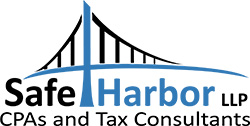Many tax benefits for business will either expire at the end of 2011 or become less valuable after 2011. Two of the most important benefits are bonus depreciation and Code Sec. 179 expensing. Both apply to investments in tangible property that can be depreciated. Other sunsetting opportunities might also be considered.
Bonus depreciation
Bonus depreciation is 100 percent for 2011. A business can write-off, in the first year, the entire cost of its investment in depreciable property. Under current law, bonus depreciation will decrease to 50 percent in 2012 and will terminate after 2012. (These deadlines are extended one year for certain transportation property and property with a longer production period). President Obama has proposed to extend 100 percent bonus depreciation through 2012. Normally, this would have a good chance of being approved, but with the focus on deficit reduction and the linking of tax benefits to tax increases, it is not at all clear what will happen.
So, if a business has income in 2011 and plans to invest in depreciable property, it is worthwhile to consider making that investment in 2011, while the available write-off is at its highest. Under normal depreciation rules, a business will still be able to claim accelerated write-offs, but this may be 50 percent or less of the cost of the property, with the balance written-off over several years, instead of all in one year.
Planning for bonus depreciation is important because the property must satisfy placed-in-service and acquisition date requirements. Property is placed in service when it is in a condition or state of readiness on a regular ongoing basis for a specifically assigned function in a trade or business. The acquisition date rules may vary. For 2011, property is acquired when the taxpayer incurs or pays its cost. This could occur when the property is delivered, but it could also be when title to the property passes. For 2012, property is acquired when the taxpayer takes physical possession of the property.
Code Sec. 179 expensing
Code Sec. 179 expensing (first-year writeoff) has been around for awhile, but at higher amounts more recently. While there is no limit on bonus depreciation, expensing is limited to a statutory amount. For 2011, this amount is $500,000. It is scheduled to drop to $125,000 in 2012 and to $25,000 after 2012 (adjusted for inflation). Moreover, the cap is reduced for the amount of total investment in Code Sec. 179 property. The phaseout threshold is $2 million for 2011, dropping to $500,000 for 2012 and $200,000 for 2013 and subsequent years. For businesses who want to invest in depreciable property, the payoff is definitely greater in 2011. Taxpayers taking advantage of expensing should write off assets that would otherwise have the longest recovery periods.
Other 2011 benefits
Some other important benefits expire at the end of 2011 or become less valuable. A significant benefit in 2011 is the 100 percent exclusion for small business stock. After 2012, the normal exclusion rate will drop to 50 percent, although it has been 75 percent in recent years. The exclusion is based on the year the stock is acquired; the stock must be held for five years before sold and satisfy other requirements.
Another important benefit is the 20 percent research credit. The credit has been extended one year at a time for a long period, so it is likely to be extended again. Nevertheless, until Congress acts, there is some uncertainty for research expenses incurred after 2011.
Conclusion
To maximize the benefits of 2011 year-end tax planning, a business must be proactive in determining what upcoming capital investments might be accelerated into this year and what investments become cost effective because of the immediate tax benefits that they offer. Some business-related tax benefits will be less valuable after 2011; for others, it is not clear what Congress and the administration will do in terms of surprising taxpayers with a year-end tax bill. Please contact this office if you have any questions over how year-end tax strategies that begin now and continue through December can help maximize tax benefits for your business.
If and only to the extent that this publication contains contributions from tax professionals who are subject to the rules of professional conduct set forth in Circular 230, as promulgated by the United States Department of the Treasury, the publisher, on behalf of those contributors, hereby states that any U.S. federal tax advice that is contained in such contributions was not intended or written to be used by any taxpayer for the purpose of avoiding penalties that may be imposed on the taxpayer by the Internal Revenue Service, and it cannot be used by any taxpayer for such purpose.

